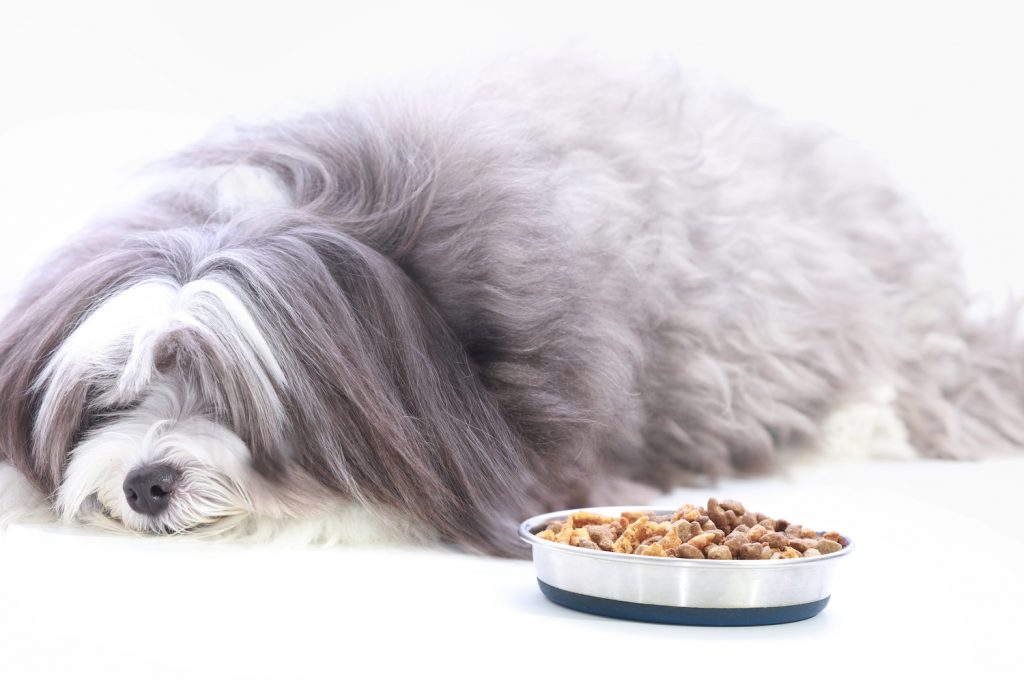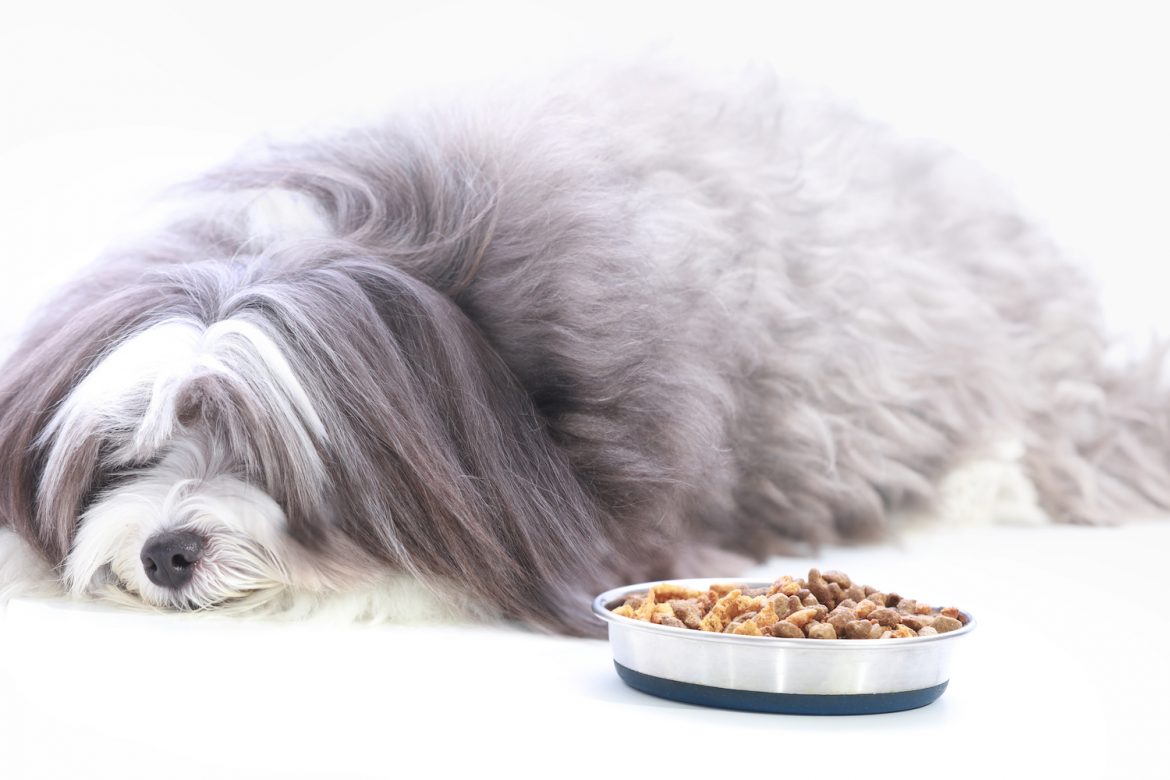Owners of a fussy eater dog know that meal times can feel like you’re jumping through hoops. You’ve tried mixing, heating, blending, and adding all sorts of different flavours to bring Fido around. But no matter what you do—or how much money you’ve spent—he gives you nothing more than a sniff and a sigh.
Unfortunately, there’s no one-fix-fits-all when it comes to convincing your dog to finish their bowl. But, with some trial and error, you can have your pup licking the bowl clean, every time! With these tasty tricks, you’ll stop worrying about their high-quality dog food going to waste!

#1: Rule out a medical issue
If your dog is generally uninterested in their food, or has recently lost interest in eating, there could be a medical issue that needs to be addressed. Because there are so many health-related reasons for a loss of appetite, from dental health to stress to serious illness, it’s important to have a vet check your dog before trying any of the following solutions.
With a clean bill of health, you can start experimenting with other tricks for getting your fussy eater dog to eat their meals.
#2: Rethink your training reward system
If you’ve read our articles on Positive Reinforcement Training and Top Dog Training Tips, you know that we’re all about reward-based training! After all, it’s one of the best ways to build a strong training relationship with your dog.
Of course, too many treats outside of mealtimes can have some unwanted consequences, such as being full when the dinner bowl comes out. Thankfully, there are pretty easy solutions here. For one thing, as your dog progresses with their training, you can start phasing out the amount of treats they’re getting. Positive praise or clicker training is a great way to tell your dog they’re doing great without giving them constant food rewards.
You might also try play-based reward training, in which their favourite toy is the goal of the training session. Play is such a powerful motivator for some dogs that you’ll have no problem cutting back on the treats!
Finally, if your dog is on a dry kibble diet, you can try using your dog’s food as their reward during training. Simply measure out their daily portion of kibble and use it throughout the day for training sessions. Whatever is left by dinnertime can be served as a meal.
#3: No more table scraps!
Sorry pooch, no more delicious kitchen scraps and dinner leftovers from the table. When you feed your dog mouth-watering human food, you’re not just quashing their appetite, but you may also be putting them at risk for stomach upset and unhealthy weight gain.
This can be a tricky habit to break, especially if your visiting family is notorious for slipping your dog bits of the holiday feast, but this is really an issue of health. For your relatives who really can’t help it, you might have a few small bits of raw dog-friendly veggies on hand that won’t ruin your dog’s appetite come dinner.
#4: Establish a routine
Doggos thrive on routine, which is why having them on a predictable eating schedule can be just the thing to stimulate their appetite.
That said, there are a few different feeding schedule options that you can choose from. Some Owners find that smaller meals fed throughout the day ensure that their pup will eat all of their food in a sitting. For others, feeding meals at 12 hour intervals stimulates more interest in their food. Whatever feeding method you choose, try your best to keep it predictable from day to day so that your dog knows when their tasty meal is coming.
#5: Up the exercise
Just like you might experience an increase in hunger after signing up for a new gym, your pupper may be more enthusiastic about meals with more exercise.
Daily exercise is a brilliant way to boost your dog’s metabolism, improve their immune system, and regulate digestion. And, whether they’re swimming, learning agility training, or running alongside you, they’ll get mental stimulation to keep them happy and emotionally regulated, too!
#6: Play or train before eating
If you’re plopping your dog’s food down without any kind of pomp and circumstance, your doggo may not see mealtimes as anything special. Instead, you can make each meal an exciting and interactive experience with play and training.
You might, for instance, have your dog go through an obstacle course that leads to their delicious meal. Or, you can try introducing a new trick a few minutes before mealtimes. This will appeal to your dog’s innate desire to work and please their favourite human. And, your fussy eater dog will be rewarded with a hard-earned meal!
Make sure that you keep activities light around mealtimes, especially if your dog is at high risk for bloat. Activities that are more mentally challenging than physical are perfect!
#7: Give them a quiet dining experience
If you live in a multi-pet household or your pup’s eating area is filled with distractions and noise, your dog might see mealtimes as a somewhat stressful experience.
Feeding your dog in a dog-safe room away from the rest of the family may allow them to polish off their meal more comfortably.
#8: Experiment with different foods
Sometimes it all comes down to a matter of taste! Some doggos like a fresh, raw meal. Others prefer to chomp down on a high quality bowl of kibble. And many pups like a combo of different foods for maximum mouth-watering goodness.
As long as your dog’s diet plan is balanced, all-natural, and approved by a dog nutritionist, your pup can decide whether they like dry, wet, lightly-cooked or raw. Just make sure that any time you’re going to introduce a new food to your dog, you provide them with a slow transition to avoid stomach upset.
Once you hit on the right dog food for your furry friend’s specific palette, they’ll gladly finish off their meal in one sitting.
Your fussy eater dog is about to become a speedy eater dog!
As you can see, there are many humane, healthy, and positive changes that you can make to convince Fido to finish off their meal. With mental stimulation, exercise, and the right dog food, you’ll say goodbye to your fussy eater dog in favour of a speedy eater who won’t leave a morsel in the bowl!

